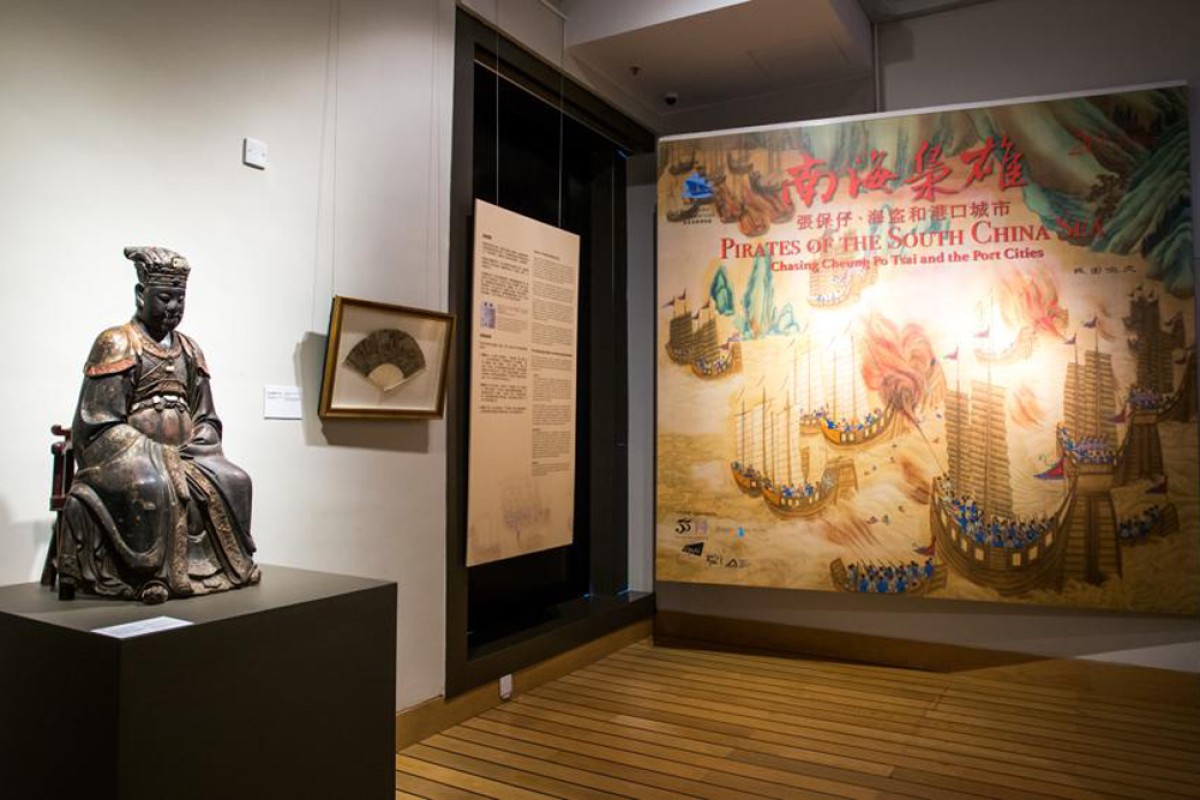
A new exhibition at the Hong Kong Maritime Museum shows us that there weren’t just pirates of the Caribbean – they were right here in Hong Kong
 We may not have had Captain Jack Sparrow, but Hong Kong did have our own buccaneers.
We may not have had Captain Jack Sparrow, but Hong Kong did have our own buccaneers.Arrrr! Normally when we think of pirates, we picture a guy with a hook and a parrot. Think Jack Sparrow, Blackbeard, or Long John Silver. Pirates like these are famous for attacking rich Spanish ships in the Caribbean Sea during the 17th and 18th centuries.
But there were also a lot of pirates working closer to Hong Kong, and the most famous of them all was Cheung Po-tsai. The son of a Tanka fisherman, as a baby, Cheung was kidnapped by Cheng Yat and Ching Shih, two of the region’s most powerful pirates. They adopted him as their son, and he grew up to be a notorious pirate who ruled the seas around Hong Kong during the 1800s. In fact, a cave on Cheung Chau is named after him, because according to legend, that’s where he would store his treasure.
Cheung is the focus of a new exhibition at the Hong Kong Maritime Museum called “Pirates of the South China Sea: Chasing Cheung Po Tsai and Port Cities”. It uses the pirate’s history as a fresh way to teach China’s maritime history during the 16th to 19th centuries.
“The idea of the exhibition started from two generous donations: a 200-year-old oil painting of nine-day sea battle near Lantau Island; and a 17th century sculpture of [pirate] Zheng Cheng-gong,” says Hong Kong Maritime Museum’s Assistant Curator, Kenny Yuen. “We wanted to make these objects as interesting as possible to people.”
In addition to these objects, the exhibit features a huge screen that shows old Chinese paintings that have been animated to show different eras of Chinese piracy. For example, there is an illustration of how Chinese pirates would attack other ships, or how the (1368-1644) and Qing (1644-1911) dynasty governments would train their soldiers to deal with pirates.
During these dynasties, Chinese navies mainly used three types of ships: the fuchuan, or Fujian-style boat; the guangchuan, a Guangdong-style boat; and the shachuan, or “sand boat”. Fuchuan and guangchuan boats were used as warships or long-distance merchant ships. Shachuan were smaller in comparison, and could only do short travels. Ships were sent around the South China Sea and Japan to defend against pirates or for trade, making stops in Shanghai, Fuzhou (Fuzhou), Ningbo (Ningbo), and Hong Kong.
“This area was an important fortress along the Maritime Silk Route,” Yuen says. “The Pearl River Delta had harbours suitable for fishing and salt farming, so Hong Kong waters were an ideal anchorage for local trading and fishing vessels. As such, it became the target of South China Sea pirates. In fact, Lantau Island had been a pirate base since the Song dynasty [960-1279].”
Piracy was a big issue for the government, as you can see from an 1808 scroll on display. It lists possible solutions to stopping pirates such as Cheung, who had damaged Chinese warships in the ports of Fujian and Guangdong. It concludes with a warning that the Qing Emperor will not tolerate any acts of piracy under any circumstances.
But although a pirate could be a dangerous nuisance, he could also be a powerful ally.
“Cheung shows how the identity of the pirates shifted over time,” Yuen explains. “After his pirate mate Cai Qian was killed in 1809, Cheung surrendered to the Qing government. After that, he used his knowledge to help the Qing defeat other pirates along the South China Sea.”
This exhibition runs until October 8